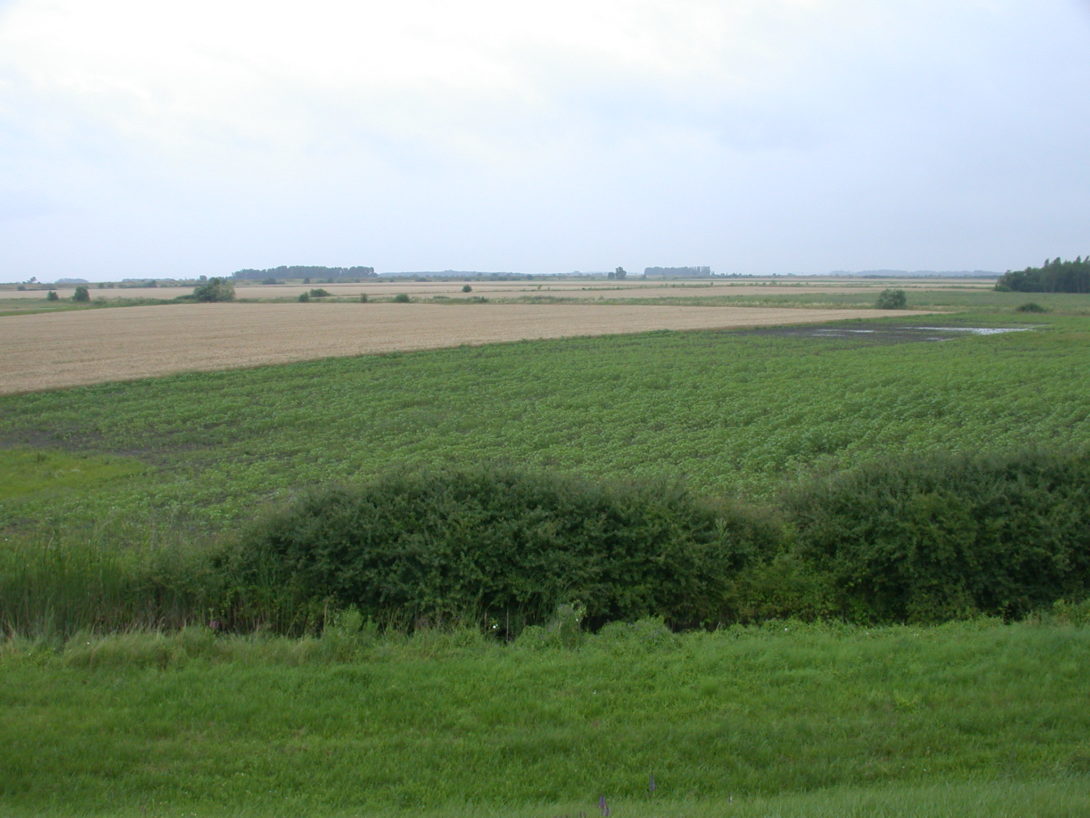Neolithic Tells
Why did some farming villages turn into big towns? Heading link

In 2009 the Körös Regional Archaeological Project launched a new phase of research focused on Neolithic tell sites in the Körös Region. Building on the research we previously had conducted into the organization of Early Copper Age villages, we shifted our focus to the evolution of nucleated Neolithic villages at the end of the sixth millennium BC. In particular, we wanted to understand how, after dozens of generations of living in small, dispersed farming villages, the communities of the Great Hungarian Plain came to live together in settlements clustered around large, nucleated, ‘tell’ sites.
At the beginning of the sixth millennium BC, farming communities established small, dispersed, settlements across the Great Hungarian Plain. Sometime around 5200 BC, the inhabitants of these farming communities began living in larger, more durable, nucleated, villages for much longer periods of time. Some of these nucleated villages evolved into settlement mounds as a result of hundreds of years of permanent habitation on the same spot. These ‘tells’ or ‘tell sites’ were established throughout southeastern Europe and the Near East during the Neolithic period, and some, such as the site of Karanovo in Bulgaria, were inhabited for thousands of years. On the Great Hungarian Plain, some communities moved together onto the nucleated tell mounds, but some people also established villages in the immediate vicinity of the tells, forming large settlement complexes that include both the tell and the other sites in their immediate vicinity. Archaeologists have excavated many prehistoric tell sites throughout central and eastern Europe over the last century, but only a few of these larger settlement complexes have been investigated systematically on the Great Hungarian Plain.
From 2009-2014, using a battery of different field methods and research techniques that had proven successful during our investigations of Early Copper Age sites, we focused on the evolution of two tell centers in the Körös region: Szeghalom-Kovácshalom and Vésztő-Mágor. We wanted to compare the development of these profoundly different Neolithic tell-based settlement complexes that evolved at roughly the same time along the same branch of the Körös River. By investigating how these two tell-based villages formed, we wanted to build broader models that would help us understand the evolution of nucleated villages throughout the Great Hungarian Plain during the Neolithic and, even more generally, why the processes of settlement nucleation and urbanization occurred in different social and historical contexts throughout the world.
A centerpiece of this project was funding from the National Science Foundation International Research Experience for Students (NSF-IRES) program, as well as a Senior Grant in Archaeology from NSF. The NSF-IRES program permitted us to train undergraduates, graduate students, and postdoctoral scientists in the multi-disciplinary sciences employed in archaeology, and the NSF Senior Grant in Archaeology permitted us to work with our colleagues to develop innovative research methods for investigating these kinds of complicated prehistoric archaeological sites. We also received a grant from the Wenner-Gren Foundation for Anthropological Research, and funding from the Field Museum of Natural History.
Our research at Szeghalom-Kovácshalom and Vésztő-Mágor revealed surprisingly divergent patterns in the trajectories of evolution of these two nearby, contemporary, Late Neolithic tell-based centers. Excavations at the sites confirmed through stylistic and absolute dating that both settlements were found at almost exactly the same time – during the Szakálhát phase of the Middle Neolithic, about 5,300 BC – but almost immediately both sites assumed different trajectories of evolution within their micro-regions. Throughout the Late Neolithic Vésztő-Mágor remained a densely occupied nucleated, tell settlement with no settlement features located beyond the multi-ditched fortification walls and ramparts. By contrast, the settlement at Szeghalom-Kovácshalom also began as a tell settlement during the Szakálhát phase of the Middle Neolithic, but during the Late Neolithic the settlement exploded far beyond the limits of the modified natural moat that surrounded the tell when over 150 longhouses were established in the immediate vicinity. At that time, the central tell may have ceased being used primarily for residential purposes and it may have been used more for more communal activities, such as burial rituals.
Other, more subtle, differences in the trajectories of the two sites also can be identified in the phytolith and micromorphological analyses. For example, reed mats were commonly used to cover floor surfaces at Vésztő-Mágor, but they do not seem to have been used at Szeghalom-Kovácshalom. We attribute these differences to micro-regional variations that reflect hyper-local traditions that were retained for generations, even as these two nearby sites engaged with the broader Neolithic world. Both sites were abandoned by the end of the Neolithic period, when the villagers of the Körös Region established the dispersed settlements of the Early Copper Age.
The results of our research have been published in several peer-reviewed journals and book chapters. We will publish another monograph about this research in 2020.